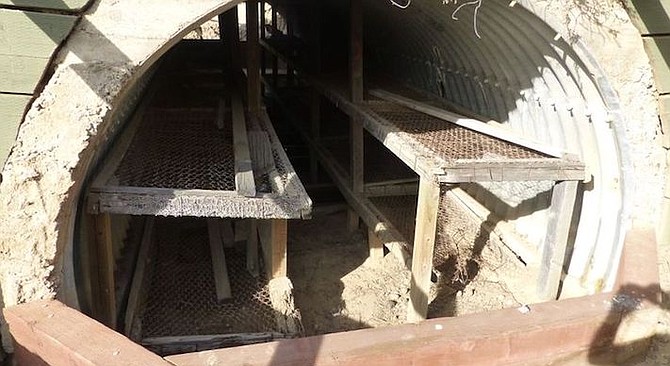 Facebook
Facebook
 X
X
 Instagram
Instagram
 TikTok
TikTok
 Youtube
Youtube

During World War II, anti-motor torpedo boat guns at Point Loma protected San Diego harbor from attack. Capable of downing enemy vessels or aircraft over four miles distant, the more accurate and rapid-firing 90mm guns were installed in 1943 to replace the World War I-era 155mm cannons that previously guarded the port.
When the war began, the battery was tagged to serve as anti-submarine, but the rolling guns needed to be mounted for accuracy at distance. The emplacements, installed by April of 1942, were called Panama Mounts because they were first used in defense of the Panama Canal. But the old guns were slow to fire, and though they had a greater range, their accuracy, even with the mounts, was suspect. The new guns were ordered, built and installed by August of 1943.
The new battery’s effective range was about 4.5 miles. Each weapon required a crew of 15, nine in the gun squad and six in the ammunition squad. No battle visited San Diego during the war, and though there were sixty-one reports of possible enemy submarines or other vessels within range of the guns on Point Loma, they were only fired in practice at benign targets. The guns were deactivated in 1946 and most of the placements were razed and graded over in the 1960s. Only a few of the bunkers for the supporting crews, observation, and ammunition storage remain.
Every Saturday, WWII re-enactors bring the coastal defenses of Point Loma to life.


During World War II, anti-motor torpedo boat guns at Point Loma protected San Diego harbor from attack. Capable of downing enemy vessels or aircraft over four miles distant, the more accurate and rapid-firing 90mm guns were installed in 1943 to replace the World War I-era 155mm cannons that previously guarded the port.
When the war began, the battery was tagged to serve as anti-submarine, but the rolling guns needed to be mounted for accuracy at distance. The emplacements, installed by April of 1942, were called Panama Mounts because they were first used in defense of the Panama Canal. But the old guns were slow to fire, and though they had a greater range, their accuracy, even with the mounts, was suspect. The new guns were ordered, built and installed by August of 1943.
The new battery’s effective range was about 4.5 miles. Each weapon required a crew of 15, nine in the gun squad and six in the ammunition squad. No battle visited San Diego during the war, and though there were sixty-one reports of possible enemy submarines or other vessels within range of the guns on Point Loma, they were only fired in practice at benign targets. The guns were deactivated in 1946 and most of the placements were razed and graded over in the 1960s. Only a few of the bunkers for the supporting crews, observation, and ammunition storage remain.
Every Saturday, WWII re-enactors bring the coastal defenses of Point Loma to life.
Comments